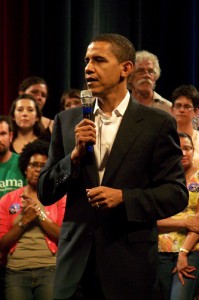President’s Commission On Latino Education Gets To Work This Month
 After 18 months of community hearings and 7 months of preparation, President Obama’s Advisory Commission on Hispanic Education will officially get to work this month. Here’s what we know about the Commission’s work so far, as reported in the Federal Register:
After 18 months of community hearings and 7 months of preparation, President Obama’s Advisory Commission on Hispanic Education will officially get to work this month. Here’s what we know about the Commission’s work so far, as reported in the Federal Register:
- The scope of work includes reduction of the dropout rate,
- improved connections between pre-K-12 and postsecondary education,
- and passage of the “DREAM Act”
There’s no mention of who is on this commission, but we do know that the members will be sworn-in at the Smithsonian Castle by Supreme Court Justice Sonia Sotomayor on the evening of May 26th. That day and the next the commission will hold its first hearings.
This is a big deal because it has been in the works for a year and a half, or twenty years depending on your perspective.
The original initiative was established by President George H. W. Bush in 1990. President Clinton continued the initiative, as did President George Bush. President Obama signed an executive order in October of 2010 that renewed the Initiative, and that’s where we are now.
We’re also at the same place we were 20 years ago with outrageous percentages of drop outs, low college entrance rates, and even lower college completion.
This latest iteration of the Presidential Hispanic Education Initiative is the product of an 18 month “listening tour” that, according to Education Week,
…focused on how to improve the education and lives of Latinos.
The Federal Register is a little more specific about the Commission’s mission:
The Commission shall advise the President and the Secretary in the following areas: (i) Developing, implementing, and coordinating educational programs and initiatives at the Department and other agencies to improve educational opportunities and outcomes for Hispanics of all ages; (ii) increasing the participation of the Hispanic community and Hispanic-Serving Institutions in the Department’s programs and in education programs at other agencies; (iii) engaging the philanthropic, business, nonprofit, and education communities in a national dialogue regarding the mission and objectives of this order; (iv) establishing partnerships with public, private, philanthropic, and nonprofit stakeholders to meet the mission and policy objectives of this order.
Follow Victor Landa on Twitter: @vlanda
[Photo Courtesy Allison Harger]

